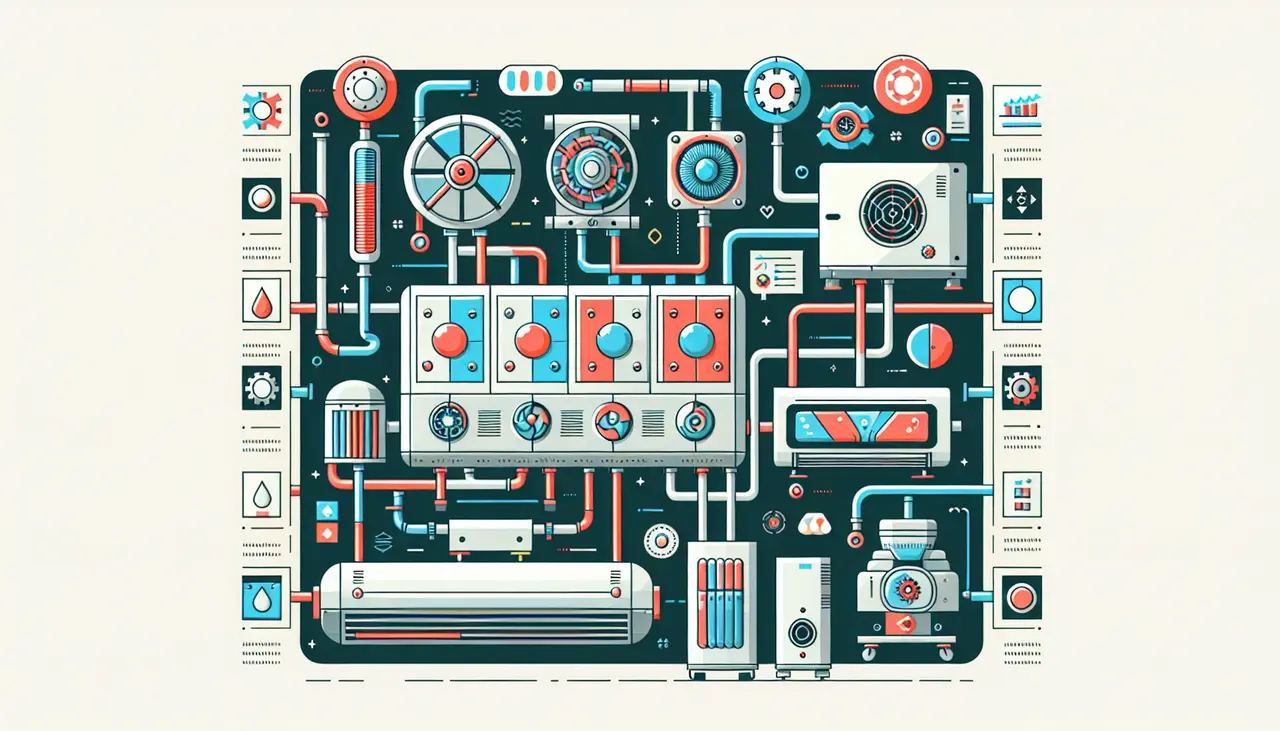Creating a high-performance specialty HVAC system requires understanding and integrating several essential components. Whether you’re a building manager, facility engineer, or HVAC enthusiast, grasping these key elements can help make your environmental control system more efficient and reliable. Let’s dive into the main components that form the backbone of a top-notch specialty HVAC system.
1. Efficient Air Handling Units
Air handling units are the core of any HVAC system. Their primary role is to circulate air throughout a building by heating, cooling, and ventilating fresh air. For a specialty system, selecting an air handler with high efficiency is crucial to optimize performance and energy savings. Investing in units with energy recovery features can further enhance their efficiency by using the energy from exhaust air to condition incoming air, efficiently managing indoor climates year-round.
Moreover, modern air handling units often incorporate energy-efficient motors and variable frequency drives, allowing for precise control over fan speeds. This adjustment not only conserves energy but also significantly reduces wear and tear on system components. When equipped with smart sensors, these systems can automatically respond to changes in indoor air demand, improving the overall comfort and air quality within the space.
2. Advanced Filtration Systems
High-performance HVAC systems require filters that can trap even the smallest pollutants. Advanced filtration technology not only maintains indoor air quality but also protects the system’s components from wear and tear, extending their lifespan. Filters such as HEPA and activated carbon can efficiently remove particles, allergens, and odors, providing a significant boost to indoor air quality, essential for environments like hospitals and laboratories.
Another innovative feature in today’s filtration systems is the use of self-cleaning mechanisms, which ensure continuous airflow and reduce maintenance requirements. These mechanisms make it easier to keep operations running smoothly without frequent disruptions for cleaning or replacement, thus minimizing maintenance costs over time.
3. Variable Speed Compressors
Variable speed compressors adjust the output load to match the system’s current need. This adaptability results in less energy consumption and smoother operation, making it a cornerstone of a high-performance specialty HVAC system. Unlike traditional compressors that operate on a simple on-off switch, these compressors provide precise and incremental power adjustments, ensuring that the system runs efficiently even during partial load conditions.
This technology significantly reduces energy wastage, operating quietly and reducing strain on system components. For facilities aiming to decrease their carbon footprint, incorporating variable speed compressors can result in considerable energy savings, aligning well with green building standards and sustainability goals.
4. Smart Thermostat Controls
Incorporating smart thermostats allows precise control over the HVAC system, leading to better energy management and customizable climate settings. This technology helps maintain the desired comfort levels efficiently by learning user preferences and automatically adjusting settings. Furthermore, smart thermostats can be integrated with mobile devices, allowing for remote monitoring and adjustment of climate settings, providing unmatched convenience, especially for large or multi-location facilities.
By analyzing usage patterns, these thermostats can predict the optimal times to activate the HVAC system, ensuring comfort while minimizing energy expenditure. Additionally, they often include features such as energy reports and alerts for regular maintenance checks, ensuring that the system consistently operates at peak performance.
5. Efficient Ductwork Design
Good ductwork design is vital for the optimal performance of an HVAC system. Efficiently designed ducts reduce air leakage and ensure consistent airflow, directly impacting the system’s overall efficiency. Materials such as insulated ductwork help maintain air temperature as it circulates through a building, reducing the load on heating or cooling components. Properly sealing and maintaining duct joints is crucial for preventing air leaks and ensuring that conditioned air reaches its destination without significant energy loss.
6. Heat Recovery Ventilation Systems
These systems are crucial for transferring heat between incoming and outgoing air streams, maximizing energy recovery and reducing the load on the HVAC system. It’s an effective way to improve efficiency and reduce operational costs. Heat recovery ventilation systems can even collaborate with renewable energy sources, like solar panels, to pre-heat or pre-cool incoming fresh air naturally, providing even further energy savings.
Designing with heat recovery in mind can also improve air quality by ensuring a constant exchange of stale indoor air with fresh outdoor air while maintaining indoor temperature stability. This level of ventilation plays a vital role in environments where air quality is a significant concern while keeping climate control costs manageable.
7. Robust Climate Monitoring Tools
Monitoring tools offer insights into the HVAC system’s performance. With robust climate monitoring, you can track various parameters, ensuring everything operates smoothly. These tools often include features like sensors for temperature, humidity, and air quality, helping facility managers adjust settings proactively before small issues become significant problems.
Moreover, these monitoring tools can be invaluable for predictive maintenance. By keeping a vigilant watch on system components, they can identify wear and inefficiencies, notifying maintenance personnel to address potential issues before they escalate, thus preventing unexpected downtime and costly repairs.




